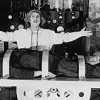“As transistors stop shrinking, open-source hardware will have its day.
Companies that produce open-source hardware are few and far between. At least, they are if you define them in the usual way: an enterprise that provides documentation and permission sufficient for others to re-create, modify, improve, and even make their own versions of the devices it sells. And although open hardware has made strides in recent years—including an increasing number of companies adhering to these practices along with the establishment of the Open Source Hardware Association—it remains a niche industry.
You might guess the reason to be simple—such companies must be set up and run by idealists who lack any hardheaded business sense. Not true! What’s held back the open-source hardware movement is not a lack of business acumen; it’s the rapid evolution of electronic technology.
The reasons for this are subtle, but as I will explain below…






